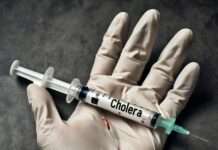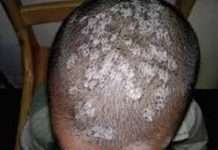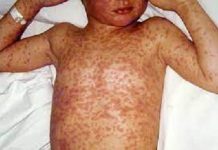
Also known as pertussis, whooping cough is a very infectious disease, caused by the bacterium bordetella pertussis. Outbreaks of the disease were first described in the 16th century by Guillaume de Baillou. It was first isolated by Jules Bordet and Octave Gengou in 1906. It was one of the most common childhood diseases and a major cause of childhood mortality in the United States.
There were 200,000 reported cases of the disease annually before a vaccine was developed in the 1940s. The widespread use of the vaccine has led to a 75 per cent decrease in its incidence, compared to the pre-vaccine era. Whooping cough remains a major health problem among children worldwide, with recent data from a modelling study suggesting that more than 24 million new cases occurred globally among children younger than the age of five in 2014 and was responsible for an estimated 160,700 deaths.
Pertussis is a small, aerobic gram-negative rod, requiring special media for isolation. It produces multiple antigenic and biologically active products, including pertussis toxin (PT), filamentous hemagglutinin (FHA), agglutinogens, adenylate cyclase, pertactin and tracheal cytotoxin. These products are responsible for the clinical features of pertussis disease. An immune response to one or more of these products produces immunity following infection. However, immunity following B. pertussis infection is not permanent.
Whooping cough is primarily a toxin-mediated disease. The disease-causing bacteria attach to the cilia of the respiratory epithelial cells, produce toxins that paralyse the cilia and cause inflammation of the respiratory tract, interfering with the clearing of pulmonary secretions. Pertussis antigens appear to allow the organism to evade host defences, such that lymphocytosis is stimulated but chemotaxis is decreased.
The incubation period of pertussis is commonly seven through 10 days, with a range of four through 21 days. The clinical course of the illness is divided into three stages: catarrhal, paroxysmal, and convalescent.
The first stage, the catarrhal stage, is characterised by the onset of coryza (runny nose), sneezing, low-grade fever and a mild, occasional cough, similar to the common cold. The cough gradually becomes more severe and after one to two weeks, the second or paroxysmal stage begins. Fever is generally minimal throughout the course of the illness.
The diagnosis of pertussis is usually during the paroxysmal stage. During this stage, the patient experiences bursts or paroxysms of numerous coughs due to difficulty in expelling thick mucus from the tracheobronchial tree. The end of the paroxysm is always accompanied by a high-pitched whoop. Such attacks cause the patient to become cyanotic. For children and young infants, this might make them appear very ill and distressed, with vomiting and exhaustion following each episode.
Paroxysmal attacks are more frequent at night, with an average of 15 attacks in 24 hours. During the first two weeks of the paroxysmal attack, the frequency may increase and remain the same for two to three weeks before a gradual decline sets in. Lasting up to six weeks, the paroxysmal stage may persist for 10 weeks. For infants younger than the age six months, they may not have the strength to have a whoop but can experience paroxysms of coughing.
The convalescent stage is characterised by gradual recovery, with the cough becoming less paroxysmal and disappearing in two to three weeks. It is also important to note that paroxysms may recur with subsequent infections. Even though whooping cough may be milder in older persons, it not a guarantee that those who are infected will not transmit the disease to others, including unimmunised or incompletely immunised infants. An adult, adolescent or a child of school age is often found to be the first case in a household with multiple pertussis cases and is often the source of infection for young infants.
Secondary bacterial pneumonia is the most common complication and cause of most pertussis-related deaths. Those at the highest risk of developing pertussis-related deaths are young infants. This is according to data from 2000-2017 which indicated that pneumonia occurred in 13 per cent of all reported pertussis cases and among 18.6 percent of infants younger than six months.
Neurological complications of pertussis, such as seizures and encephalopathy due to hypoxia from coughing or from the toxins produced by the bacterium, are common among infants
Pertussis vaccines are given by intramuscular injection. Each dose of pertussis-containing vaccine contains aluminum as an adjuvant but no preservative. DTaP-HepB-IPV (Pediarix), DTaP-IPV/Hib (Pentacel), DTaP-IPV-Hib-HepB (Vaxelis), DTaP-IPV (Kinrix), and DTaP-IPV (Quadracel) contain neomycin and polymyxin B as antibiotics. DTaP-IPV-Hib-HepB (Vaxelis) contains streptomycin as an antibiotic. DTaP-HepB-IPV (Pediarix) and DTaP-IPV-Hib-HepB (Vaxelis) vaccines contain yeast protein.













